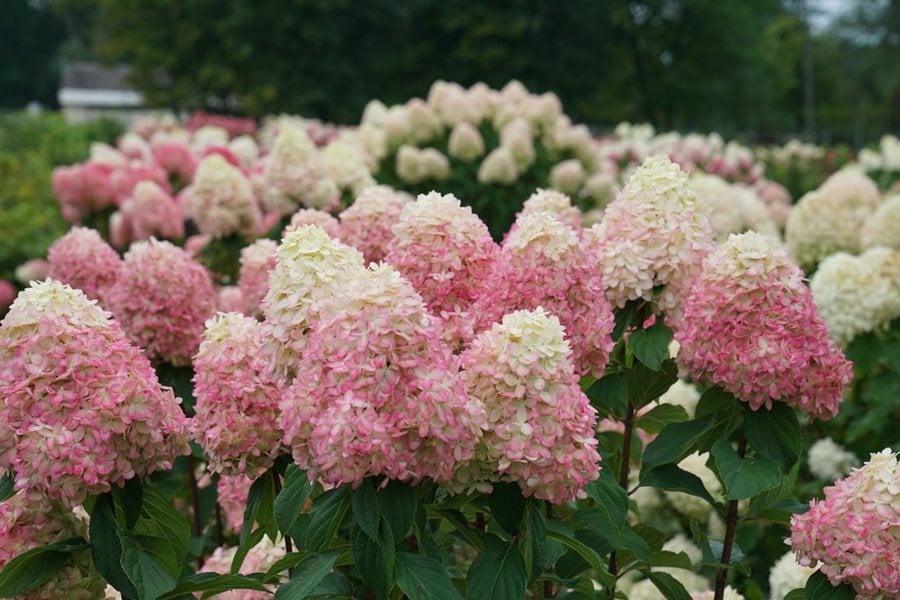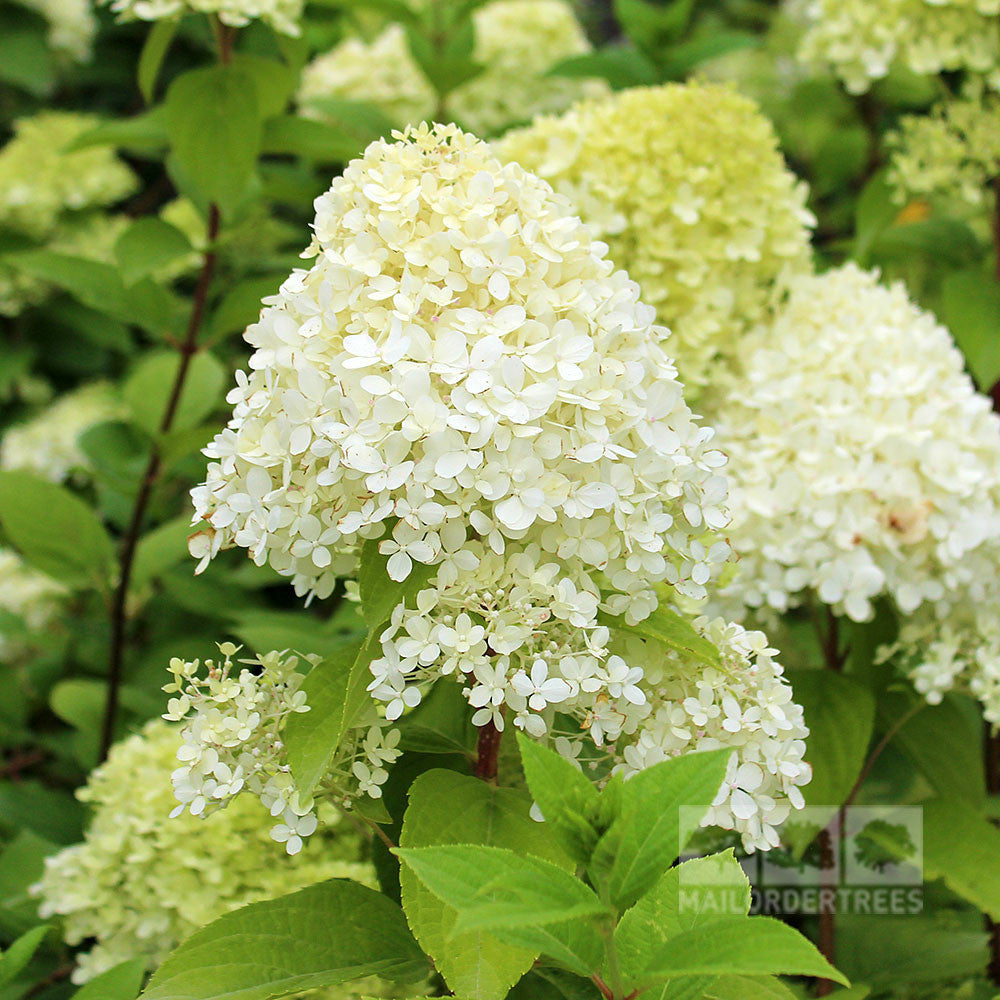Limelight Hydrangea: The Showstopper Shrub That Will
Limelight Hydrangea: The Showstopper Shrub That Will
Introduction
Limelight hydrangea is a popular shrub known for its large, cone-shaped flowers that bloom in midsummer. The flowers start out a light lime green color and gradually fade to white as the season progresses. In some cases, the flowers may even develop a pink tint. Limelight hydrangeas are relatively easy to care for and can be grown in a variety of climates. They are also relatively pest- and disease-resistant.
Main Content
- Planting and Care
Limelight hydrangeas should be planted in full sun to partial shade. They prefer moist, well-drained soil. When planting, amend the soil with compost or other organic matter. Limelight hydrangeas do not require a lot of fertilizer. A light application of fertilizer in the spring will help promote new growth and flowering.
- Watering
Limelight hydrangeas need regular watering, especially during the first year after planting. Once established, they are more drought tolerant. However, they will still appreciate a deep watering once a week during hot, dry weather.
- Pruning
Limelight hydrangeas do not require a lot of pruning. However, you may want to remove dead or damaged branches in the spring. You can also trim the shrub to maintain its shape. If you want to encourage more flowering, you can prune the shrub back to about half its size in the early spring.
- Foliage
The foliage of limelight hydrangeas is dark green and glossy. The leaves are oval-shaped and about 3-4 inches long. The leaves turn a beautiful shade of red in the fall.
- Blooming Season
Limelight hydrangeas bloom in midsummer and continue to flower for about 6-8 weeks. The flowers are white or pale green when they first open, but they gradually fade to white as the season progresses. In some cases, the flowers may even develop a pink tint.
- Pollinators
Limelight hydrangeas are a magnet for pollinators, such as bees, butterflies, and hummingbirds. The flowers are a good source of nectar and pollen.
- Hardiness
Limelight hydrangeas are hardy in USDA zones 3-9. They can withstand cold winters and hot summers.
- Diseases and Pests
Limelight hydrangeas are relatively resistant to diseases and pests. However, they may be susceptible to leaf spot, powdery mildew, and aphids. If you notice any problems, you can treat them with an appropriate fungicide or pesticide.
Conclusion
Limelight hydrangea is a beautiful and easy-to-care-for shrub that can add a touch of elegance to any garden. If you are looking for a showstopper shrub that will bloom for months, limelight hydrangea is a great choice.
Hortensia paniculata 'Limelight' is a beautiful and versatile shrub that is perfect for adding a touch of elegance to any garden. Its large, cone-shaped flowers bloom in a stunning lime green color that gradually fades to creamy white in late summer. The flowers are held upright on sturdy stems, making them perfect for displaying in mixed borders or as a standalone specimen.
If you are looking for a low-maintenance shrub that is easy to grow, H. paniculata 'Limelight' is a great option. It prefers full sun to partial shade and moist, well-drained soil. It is also relatively pest- and disease-free.
To learn more about H. paniculata 'Limelight', I recommend visiting . This website has a wealth of information about the plant, including its care requirements, planting tips, and pest and disease prevention. You can also find photos of the plant in bloom, as well as helpful videos.
FAQ of hortensia paniculata limelight
- What is Hydrangea paniculata Limelight?
Hydrangea paniculata Limelight is a deciduous shrub that blooms in summer with large, panicle-shaped flowers. The flowers are typically white or pink, but can also be blue or purple depending on the soil pH. Limelight is a hardy plant that is easy to grow and care for. It is a popular choice for landscaping, and can be used as a hedge, specimen plant, or cut flower.
- How to plant Hydrangea paniculata Limelight?
Hydrangea paniculata Limelight should be planted in full sun to partial shade. It prefers moist, well-drained soil. The best time to plant is in the spring or fall. When planting, dig a hole that is twice the size of the root ball. Backfill the hole with soil, and water well.
- How to care for Hydrangea paniculata Limelight?
Hydrangea paniculata Limelight is a relatively low-maintenance plant. It needs regular watering, especially during the first year after planting. It should be fertilized once a year in the spring with a balanced fertilizer. In the fall, the leaves should be trimmed back to about 6 inches from the ground.
- What are the common problems with Hydrangea paniculata Limelight?
The most common problems with Hydrangea paniculata Limelight are:
* Leaf spot: This is a fungal disease that causes brown spots on the leaves. It can be treated with a fungicide.
* Pests: Hydrangea paniculata Limelight can be susceptible to pests such as aphids, scale insects, and Japanese beetles. These pests can be controlled with insecticidal soap or neem oil.
* Winter damage: In cold climates, Hydrangea paniculata Limelight may experience winter damage. The leaves may turn brown and wilt, and the branches may die back. The plant will usually recover in the spring, but it is important to protect it from the cold during the winter.
- How to propagate Hydrangea paniculata Limelight?
Hydrangea paniculata Limelight can be propagated by rooting stem cuttings. In the spring or summer, take 4-6 inch cuttings from healthy, non-flowering stems. Remove the lower leaves from the cuttings, and dip them in rooting hormone. Plant the cuttings in a well-draining potting mix, and keep the soil moist. The cuttings should root in 4-6 weeks.
Image of hortensia paniculata limelight
5 different images of "hortensia paniculata limelight" from pinterest.com:




Post a Comment for "Limelight Hydrangea: The Showstopper Shrub That Will"